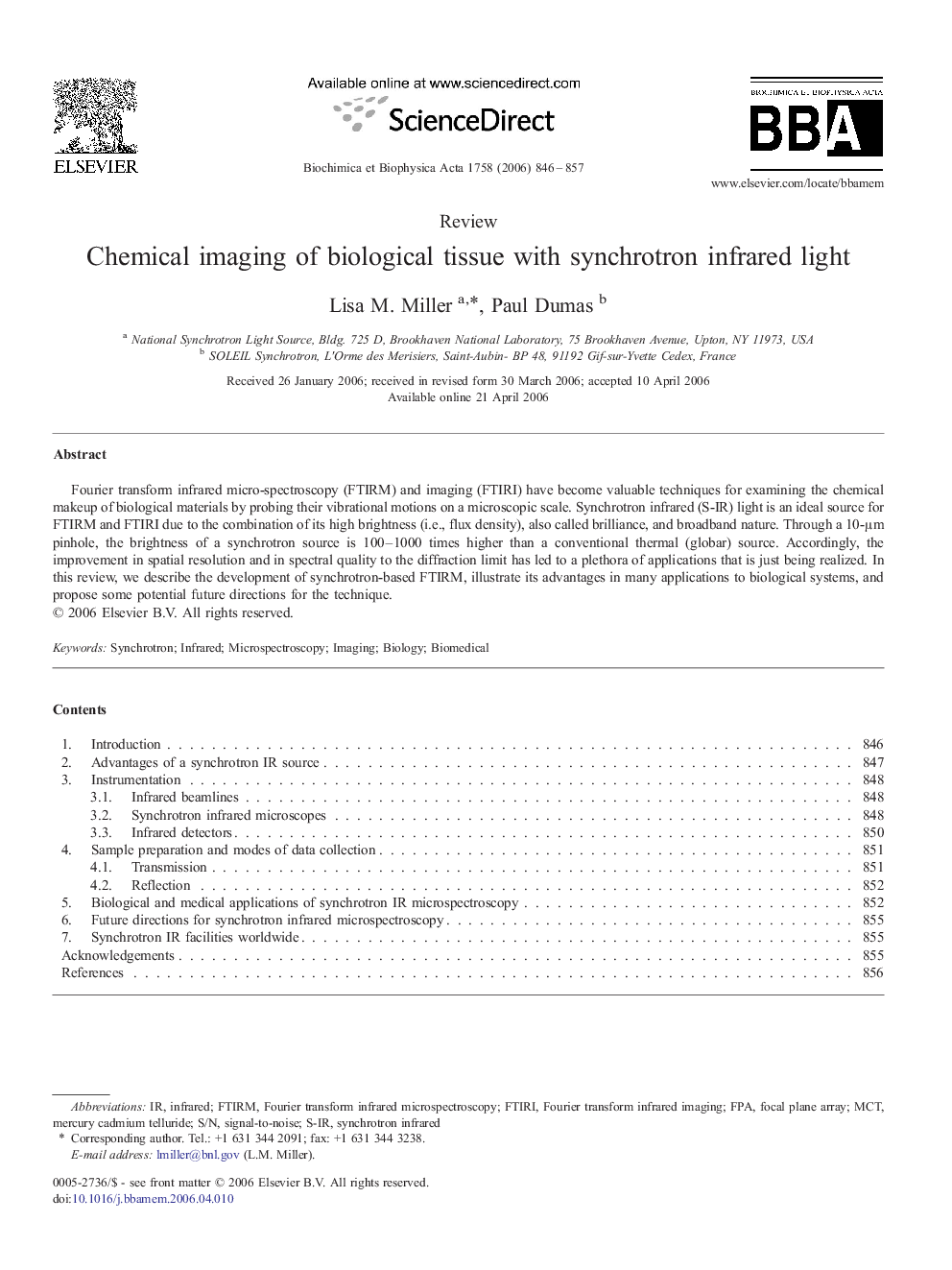| Article ID | Journal | Published Year | Pages | File Type |
|---|---|---|---|---|
| 1946096 | Biochimica et Biophysica Acta (BBA) - Biomembranes | 2006 | 12 Pages |
Fourier transform infrared micro-spectroscopy (FTIRM) and imaging (FTIRI) have become valuable techniques for examining the chemical makeup of biological materials by probing their vibrational motions on a microscopic scale. Synchrotron infrared (S-IR) light is an ideal source for FTIRM and FTIRI due to the combination of its high brightness (i.e., flux density), also called brilliance, and broadband nature. Through a 10-μm pinhole, the brightness of a synchrotron source is 100–1000 times higher than a conventional thermal (globar) source. Accordingly, the improvement in spatial resolution and in spectral quality to the diffraction limit has led to a plethora of applications that is just being realized. In this review, we describe the development of synchrotron-based FTIRM, illustrate its advantages in many applications to biological systems, and propose some potential future directions for the technique.
